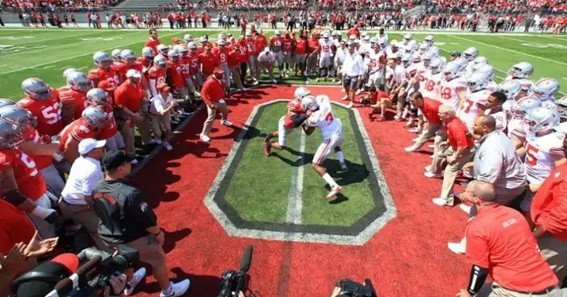When coaches ask “what are some good reasons why Oklahoma drills are good,” they’re referring to a time‑tested full‑contact exercise that combines confined space tackling with blocking fundamentals—teaching players how to leverage their bodies, maintain pad level, and absorb contact safely.
Key Reasons Why Oklahoma Drills Are Good
-
Teaches Proper Leverage & Pad Level
At its core, the Oklahoma drill forces players to engage in one‑on‑one collisions in a narrow chute, emphasizing low pad level, hand placement, and leverage—fundamentals crucial for both blocking and tackling. -
Develops Realistic Tackling & Blocking Technique
Unlike open‑field drills, the Oklahoma drill replicates game‑speed contact in tight quarters, helping defenders learn to wrap up ball‑carriers and blockers practice driving opponents back—skills essential on every level of play. -
Builds Mental Toughness & Confidence
Many scouts and veteran coaches believe the drill is an “essential part of learning to … be tough,” pushing players past their comfort zones and instilling self‑confidence when they see they can handle—and deliver—hard hits. -
Provides Coaches a Direct Evaluation Tool
With only two linemen plus a runner and tackler in play, coaches get a clear, head‑to‑head view of who excels under pressure, making it easier to identify players ready for full‑contact snaps. -
Conditions for Full‑Contact Practice
Used often to kick off the first day of pads, the Oklahoma drill helps acclimate athletes mentally and physically to live contact, reducing the shock of hitting in later scrimmages and games.
FAQ
-
What is the Oklahoma drill?
It’s a confined full‑contact drill where two players start in a narrow corridor and, at the whistle, collide, ending when one is driven out, tackled, or the ball‑carrier scores. -
At what levels is the Oklahoma drill used?
Commonly run in high school, college, and formerly the NFL (until its 2019 ban), it’s still popular in many youth and small‑college programs to introduce contact safely. -
Are there safety concerns with the Oklahoma drill?
Yes—studies show high impact rates per athlete, and many organizations advise limiting or modifying the drill to reduce concussion risk. -
Can fundamentals be taught with less risky drills?
Critics argue alternative drills—like “multiplayer tackle” or board‑drill progressions—teach similar skills with fewer high‑magnitude hits, though some coaches still favor the intensity of the Oklahoma drill. -
How often should teams run the Oklahoma drill?
Best practice is to use it sparingly—often only to open full‑contact practice—while emphasizing proper technique, thorough warm‑ups, and helmet‑to‑shoulder tackling to minimize injury.Stay tuned to learn more about fr-long-sleeve-shirts-cheap










